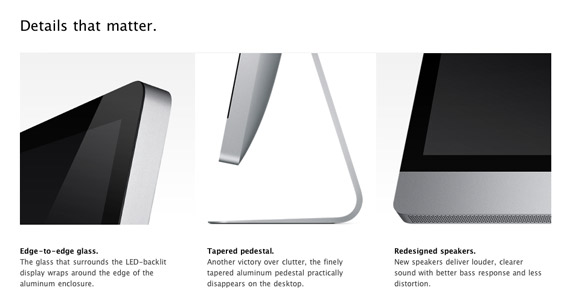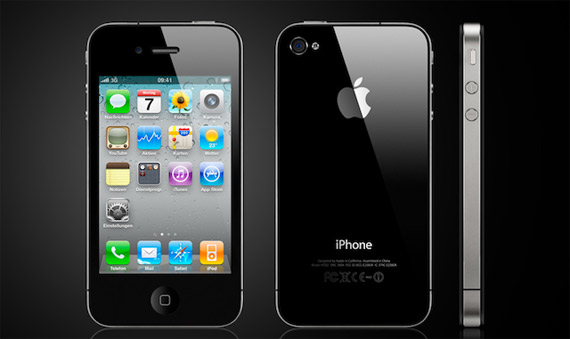How do you know if any of your marketing is going to work?
Ever gone to a trade show and come home with much fewer leads than you expected? Ever run an ad and received no response? How about that direct mail postcard that was supposed to deliver 2% return and only did .2%?
Any of these scenarios sound familiar? I have hundreds of stories like these from clients who, despite our advice, ran traditional marketing campaigns – only to regret the cost and labor that went into their efforts.
Is inbound marketing any different?
Yes and no. Sorry, but that’s the truth. Yes, it’s different because it's 100% quantifiable, 100% optimizable and 100% built on a methodology that matches perfectly with today’s buyer behavior. No, it’s not different because every program at every company in every industry with every client performs a little differently. Until we know exactly how it's performing, we’re only using educated guesses to predict this.
Once we get into it, though, and see what’s performing, what’s underperforming and what’s overperforming – well, that's when the magic happens. Here’s how to ensure that you see some of that magic at your company.
Predict Based On Experience
Predicting inbound marketing results isn’t easy, but it’s possible. Once you have a set of experiences, you get to see what worked and how much each of those executed tactics contributed to performance. You get an idea of how a program might perform. This experience allows you to estimate performance based on a set of assumptions, such as the idea that you’ll be able to post 12 high-quality, search engine-optimized and socialized blog articles every month.
Over time, you’ll understand how those 12 new, indexable pages help your company rank for the keywords included in them. You’ll know that increased rankings mean increased visitors. You’ll also know that once those articles are shared on other social media networks, increased visitors will come from those social sites, too. While you won’t know everything exactly, you will find out over time the difference between visitor results when you blog 12 times a month and those when you blog 10 times a month. This is very important for predicting future performance and matching that performance to program management.
Make Sure You Start With Strategy
If you want to ensure that your inbound program works as expected, start with a marketing strategy. This gives you the foundation you need to build your inbound plan on solid footing. Once you know your personas, the messages prospects need to hear, the stories you want to tell, what connects with people emotionally, how to make people feel safe, what content is required to answer their questions before they connect with you personally and what makes your business remarkable, you’re ready for inbound tactics – but not before then.
Optimize Often, Based On Data
No other marketing methodology provides as much data on the performance of marketing tactics as inbound does. Finally, you see which keywords you rank for, which blog articles are shared, which are viewed, which content is downloaded, which CTA buttons are converting, which landing pages are most popular and how many leads come from organic searches, social media or referring websites.
This information needs to be analyzed, responded to and then acted on in a timely way – within a month so that you’re able to impact performance right away as opposed to waiting three more months to see what happened and then not being able to affect results immediately. The faster your team can act on performance data, the better your results from your inbound effort are going to be.
Set Goals, Reset Goals, Manage To Your Goals
Goal setting is important, but responding to actual performance data and then resetting goals is even more important. When you set goals, you're using the data that’s available to you. As you work through your inbound program, you’re going to get new, fresher and more relevant data. This demands that you reset your objectives. Forcing your team to hit old goals based on old data is a completely unconstructive exercise.
Reset your goals monthly, and make sure that your team is working within the month to hit them. Actively managing to those goals is possible with inbound. Website visitors lagging? Try a few extra guest blogs, content sourcing, influencer outreach or posting on private networks, like LinkedIn. Leads lagging? Try to improve top landing page performance, or launch a new educational content offer. Maybe redesign the CTA buttons on your site or add a new offer to the home page. This is all reasonable work to be done in days, not months. The result is attaining your lead goals month over month.
Nothing is definite. If we all knew what was going to happen tomorrow, next week, next month or next year, we’d be doing different jobs (most likely in Las Vegas). But, that doesn’t diminish what we do know about how inbound works.
We know that the longer you stick with it, the better your results are. We know that the more activity you put into it, the better your results are. We know that the faster you pulse, the better your results are. We know that the better you connect all of the different inbound tactics, the better your results are.
We know that when compared to traditional marketing tactics, inbound marketing is the only way to create a predictable, scalable, repeatable marketing machine that drives leads for your business.
 I work for a large consumer packaged goods company. I've been here for five years, since I finished my MBA. I work incredibly long hours. The work is fine. It's very quantitative - we are a food company but our conversations revolve around market segments, launch schedules and pricing models.
I work for a large consumer packaged goods company. I've been here for five years, since I finished my MBA. I work incredibly long hours. The work is fine. It's very quantitative - we are a food company but our conversations revolve around market segments, launch schedules and pricing models. Toward the end of the day Friday I came out of a meeting where we had been allocating the scarce supply of shippable fixtures. I got in the elevator. Our division president was in the elevator. I don't really know him. His name is Blake. He is my boss's boss's boss.
Toward the end of the day Friday I came out of a meeting where we had been allocating the scarce supply of shippable fixtures. I got in the elevator. Our division president was in the elevator. I don't really know him. His name is Blake. He is my boss's boss's boss. I just stared at her. I appreciated her concern for me, but I am a thirty-six-year-old adult with a child of my own. I don't need my boss's protection. I don't want to work in a place where people say "I'll protect you from our boss" or where they say "Your job depends on it." It's so sick and wrong.
I just stared at her. I appreciated her concern for me, but I am a thirty-six-year-old adult with a child of my own. I don't need my boss's protection. I don't want to work in a place where people say "I'll protect you from our boss" or where they say "Your job depends on it." It's so sick and wrong.  Dear Noel,
Dear Noel, God Bless Blake, a great teacher, for showing you who he is. Don't waste your emotional energy holding any anger toward him. He isn't worthy of your anger, Noel. Poor Blake is mostly suit and hot air.
God Bless Blake, a great teacher, for showing you who he is. Don't waste your emotional energy holding any anger toward him. He isn't worthy of your anger, Noel. Poor Blake is mostly suit and hot air. Give your reinvention time. It is a physical process and it has its own pace. You are lucky because you're employed.
Give your reinvention time. It is a physical process and it has its own pace. You are lucky because you're employed. Is Noel going to quit his job?
Is Noel going to quit his job?
